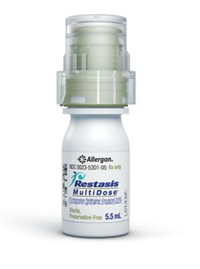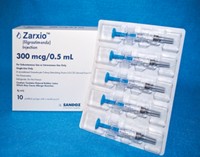Advertisement
Grab your lab coat. Let's get started
Welcome!
Welcome!
Create an account below to get 6 C&EN articles per month, receive newsletters and more - all free.
It seems this is your first time logging in online. Please enter the following information to continue.
As an ACS member you automatically get access to this site. All we need is few more details to create your reading experience.
Not you? Sign in with a different account.
Not you? Sign in with a different account.
ERROR 1
ERROR 1
ERROR 2
ERROR 2
ERROR 2
ERROR 2
ERROR 2
Password and Confirm password must match.
If you have an ACS member number, please enter it here so we can link this account to your membership. (optional)
ERROR 2
ACS values your privacy. By submitting your information, you are gaining access to C&EN and subscribing to our weekly newsletter. We use the information you provide to make your reading experience better, and we will never sell your data to third party members.
Pharmaceuticals
Green Light For U.S. Biosimilar Drug
Biologics: Biogen’s Zarxio prevails for now in court battle with Amgen, developer of Neupogen
by William G. Schulz
July 23, 2015
| A version of this story appeared in
Volume 93, Issue 30

A federal appeals court has cleared the path for possible launch in September of the first biosimilar drug in the U.S.—Sandoz’s Zarxio, a version of the biologic filgrastim meant to help ward off infections in cancer patients. Sandoz developed and then obtained FDA approval of Zarxio, but in the process did not provide information relevant to possible patent claims with Amgen, the developer of the filgrastim reference drug marketed under the name Neupogen.
Biosimilars are less expensive equivalents of FDA-licensed biologic drugs, which by definition can rarely be exactly duplicated.
The take-home message of the federal appeals court ruling, says intellectual property attorney Gary H. Levin of the BakerHostetler law firm, is that biosimilar makers are not strictly required to identify and resolve patent issues with the reference drug sponsor before seeking FDA approval of their product. For now, it could mean that biosimilar drug makers can get their drugs to market sooner, he says.
Four more biosimilar drugs are known to be awaiting FDA approval.
The underlying law, Levin explains, spells out an orderly but complex process in which applicants and sponsors can try to identify and resolve patent issues in advance of biosimilar drug approval and marketing. Under one of the provisions of this so-called patent dance pathway, the parties exchange technical and patent information to develop an “agreed” list of the sponsor’s patents that might be relevant to the applicant’s proposed product. Assuming agreement is reached, the sponsor has 30 days in which to sue for patent infringement. The new ruling, he says, means engaging in this patent dance is purely optional.
In last week’s decision, the appeals court also dismissed Sandoz’s counterclaims that it suffered financial harms from delays in its ability to market Zarxio as a result of the Amgen litigation.




Join the conversation
Contact the reporter
Submit a Letter to the Editor for publication
Engage with us on Twitter